I watched SpaceX's Falcon Heavy rocket launch Elon Musk's car into space - here's what it was like near the launchpad
SpaceX gave me a press badge came with bunch of stickers that coded my access to various events. I wasn't initially told what the smiley face meant — but I had a good guess.

Falcon Heavy fever was on display as I drove toward the space center. Some people were camping out on a causeway with good visibility of the launch pad more than a day ahead.

Once through the gates, I drove past this massive building: a 750,000-square-foot factory to build reusable rockets for Blue Origin, the aerospace company founded by Amazon billionaire Jeff Bezos.
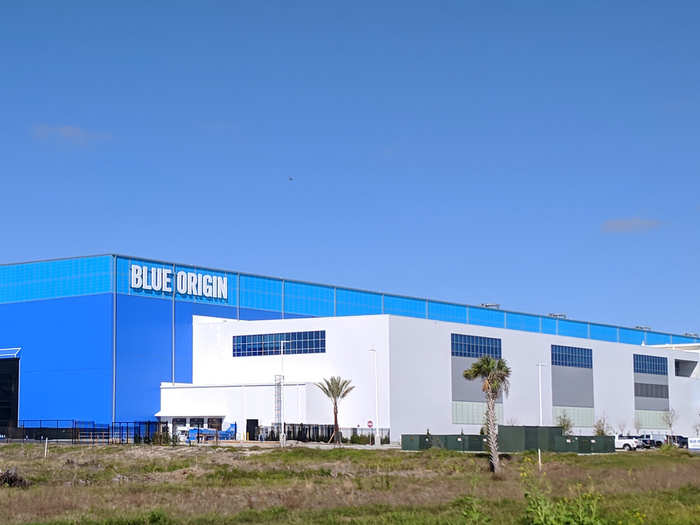
Blue Origin is likely to become a major competitor of SpaceX. I asked for permission to peek inside, but Blue Origin representatives declined.
I arrived in time to catch a ride to see Falcon Heavy on its launchpad. A gaggle of other journalists were waiting with all sorts of gear.
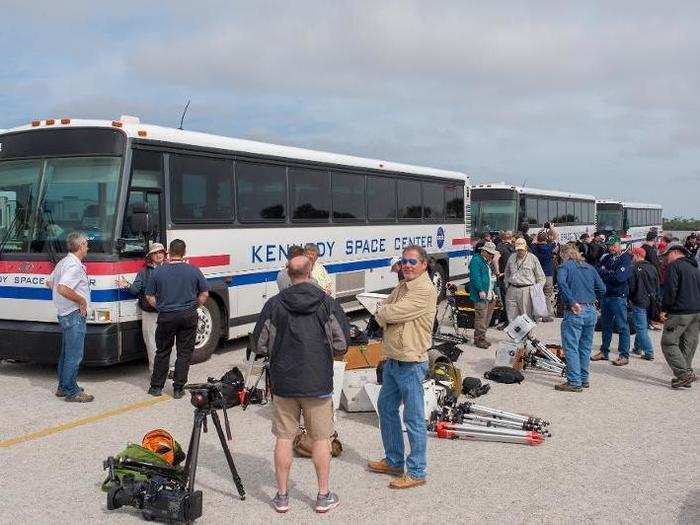
Most photographers came with remote camera boxes — devices that automatically take pictures of a launch from spots where it'd be too dangerous to put a person. Some had expensive weatherproof camera housings, but mailboxes were a favorite on-the-cheap substitute.
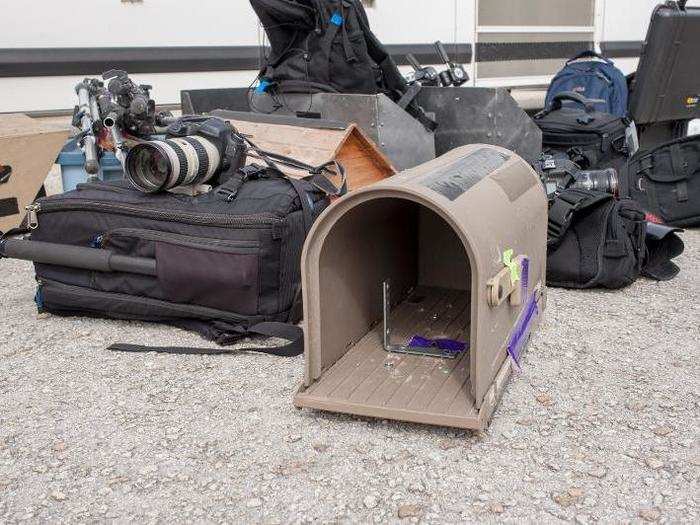
Most remote boxes use a rocket's deafening roar to tell the camera to start taking as many pictures as quickly as possible.
NASA takes launchpad security very seriously. Everyone had to set out their gear on the pavement, take 10 steps back, and let a police dog sniff for weapons and explosives.

At first, Falcon Heavy — which is 230 feet tall — looked tiny in the distance.
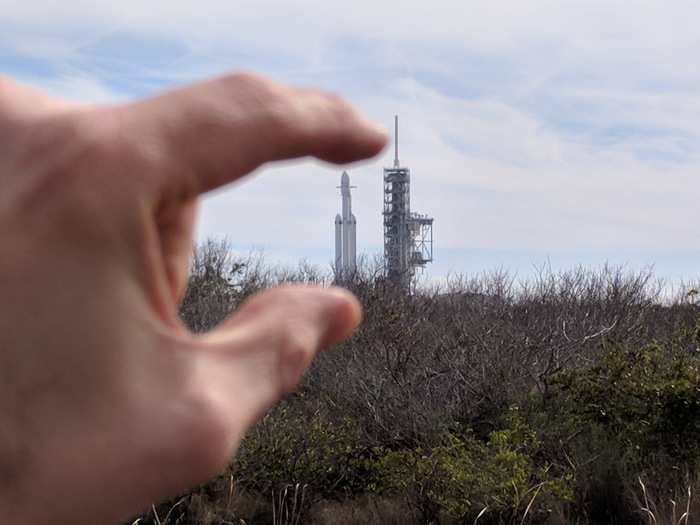
But as our bus got closer to the pad, the scale of the rocket became apparent.
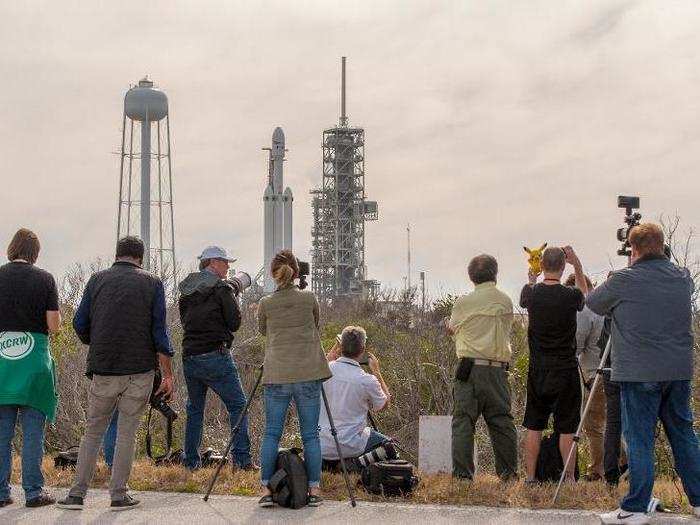
It's stunning to see what people are capable of when they challenge themselves. Falcon Heavy was sitting on Launchpad 39A — the same place from which Apollo astronauts were launched to the moon.
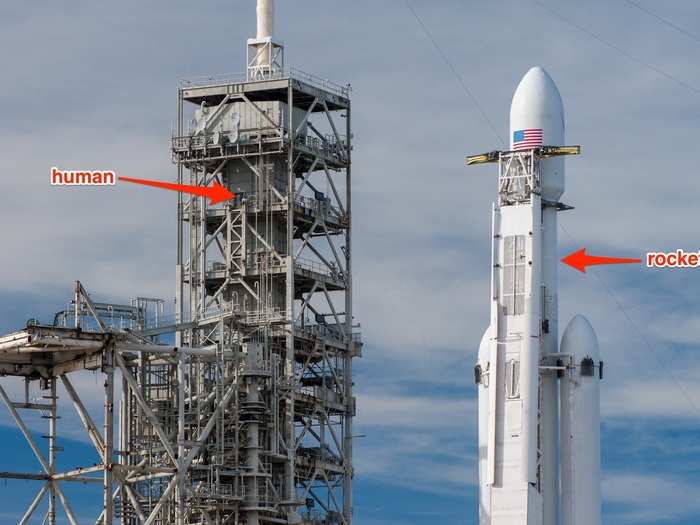
Nearby was the Saturn Causeway: a wide path of gravel that NASA used to inch its Saturn V rockets and space shuttles toward the launchpad. Seven years after the last shuttle launch, you can still see ridges left by the huge treads of its crawling platform.

From that path, we got a spectacular view of Falcon Heavy on the pad.
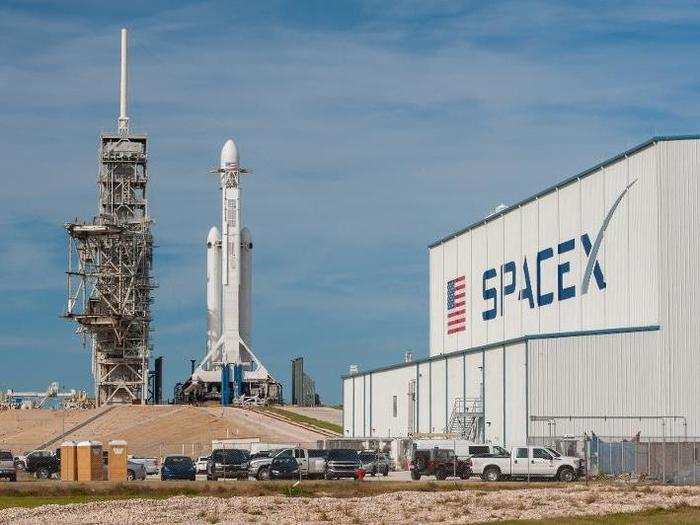
We weren't allowed to get closer, however, until Musk finished his own visit to the rocket. "I was looking at Falcon Heavy and thinking, 'it’s a bit small,'" Musk told reporters on Tuesday.
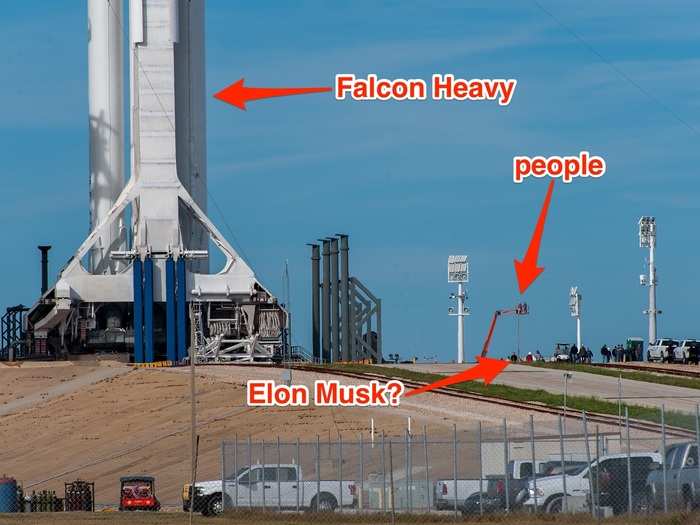
Once Musk departed, we pulled onto two earthen mounds meant to deflect the force of launch — and any explosive accidents. The view was incredible.
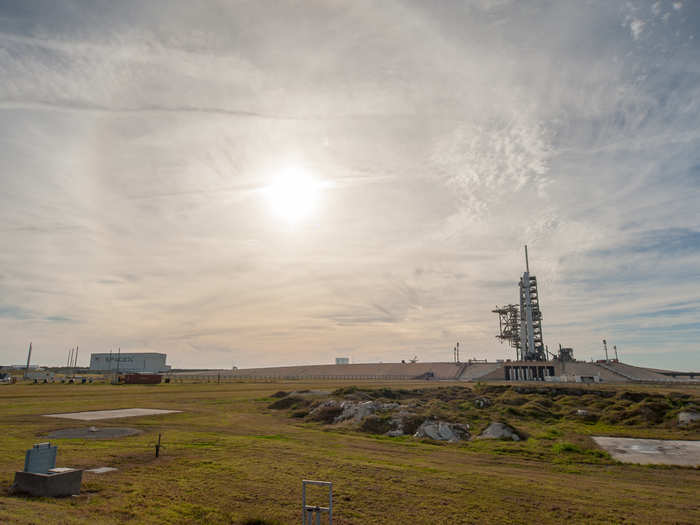
Take a look around Launchpad 39A by clicking, dragging, and zooming in on this 360-degree photo.

We got a good look at the rocket's enormous launch mounts...
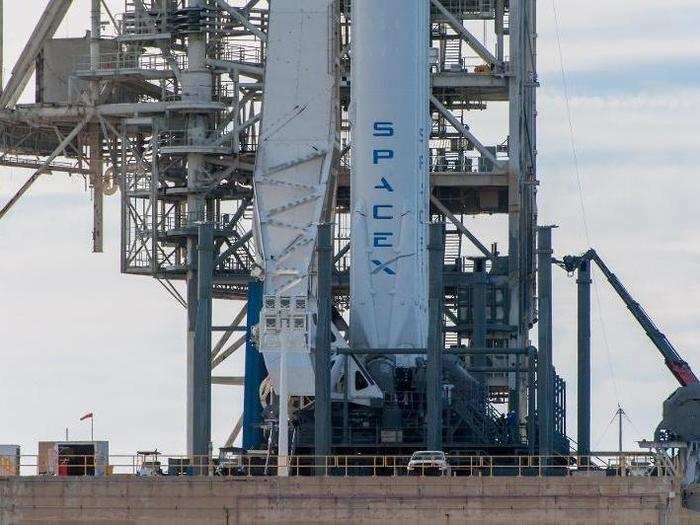
... And the point where its side boosters attached to the central booster.
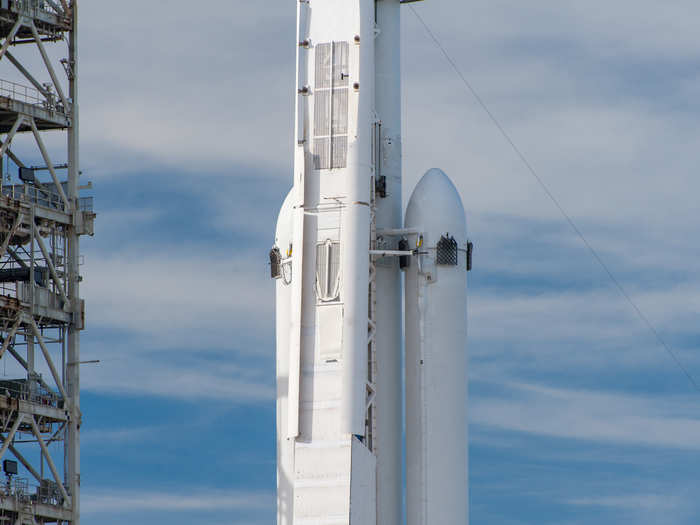
Nearby were huge tanks filled with RP-1, a type of rocket-grade kerosene that SpaceX uses to fuel its Falcon 9 and Falcon Heavy rockets.
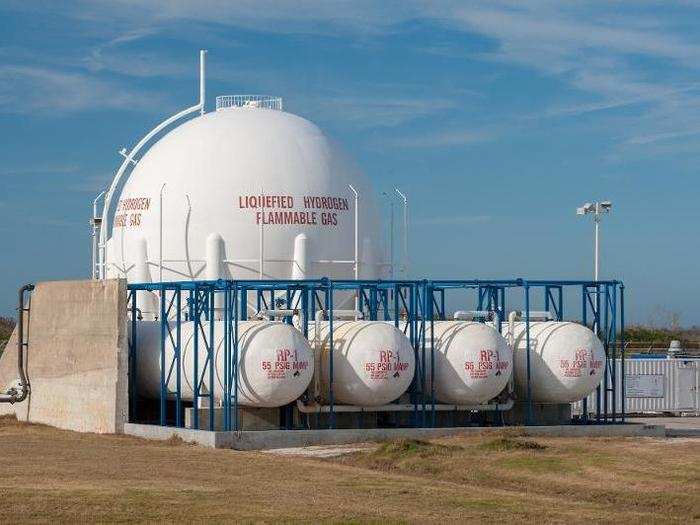
I rarely take selfies, but I couldn't pass up this opportunity.
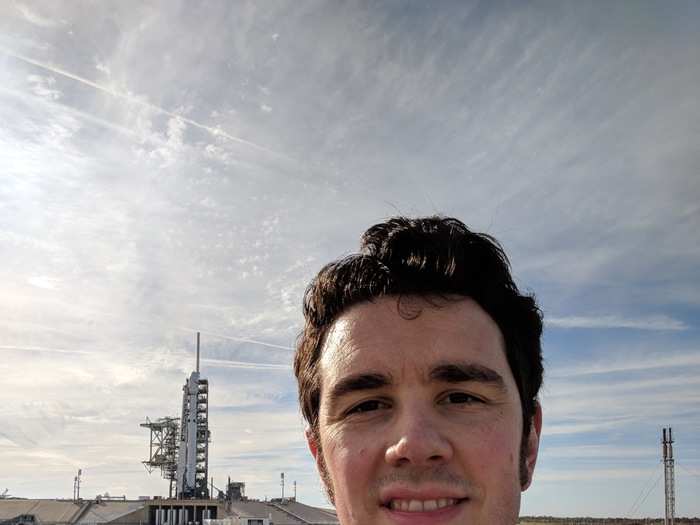
Tim Dodd, the "Everyday Astronaut" of internet fame, couldn't resist, either. He put on his flight suit and helmet, then posed for a picture.
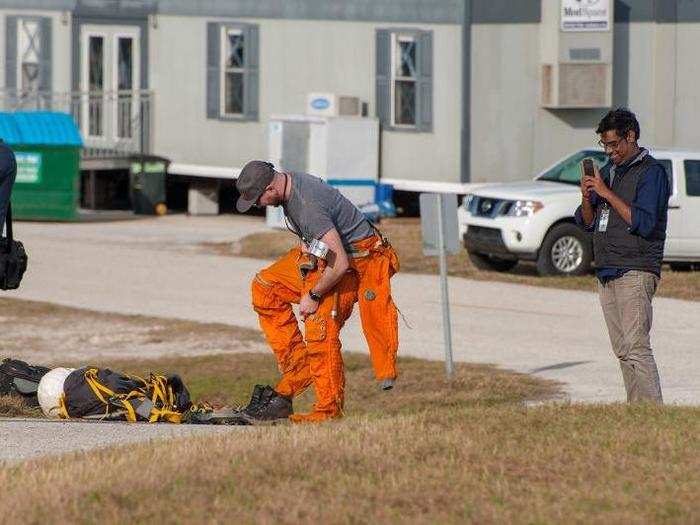
Source: Twitter
With daylight fading, it was time to head back.
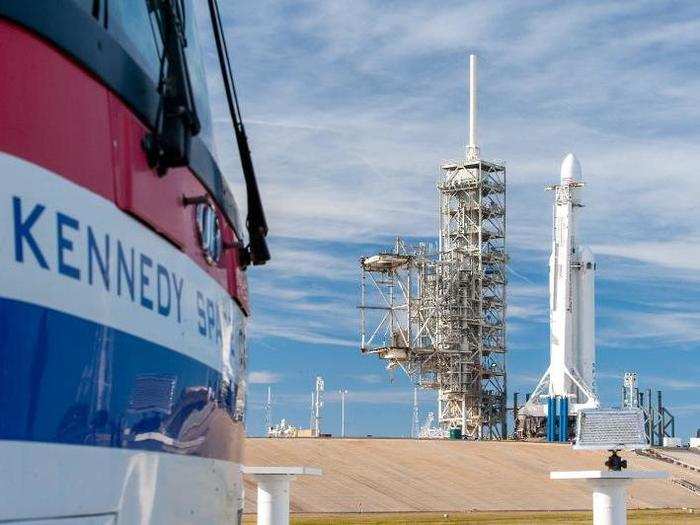
The next day we'd find out if weather or technical problems would scrub the launch. I was also anxious the rocket might fail; Musk had recently said there was a good chance it'd explode.
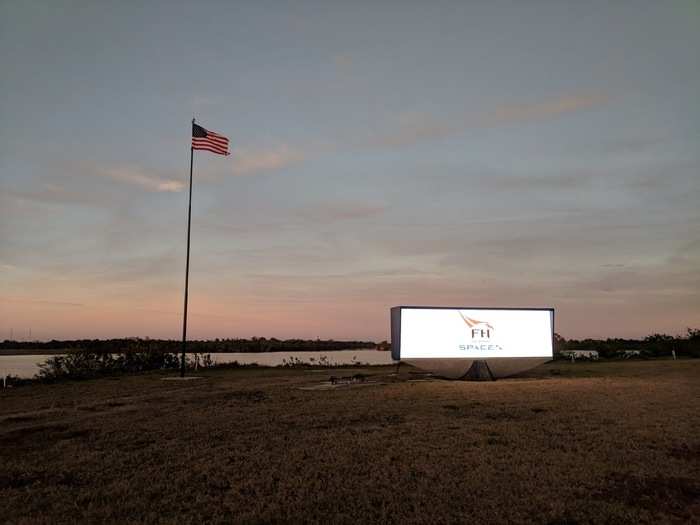
Getting into the space center on Tuesday wasn't easy. Thousands of SpaceX fans had flooded Cape Canaveral and clogged roadways to see Falcon Heavy lift off.
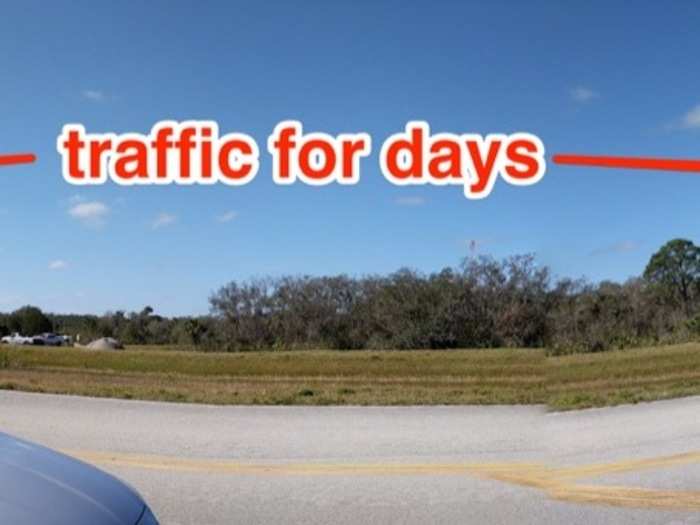
The press site was also choked with hundreds of journalists and guests of SpaceX.
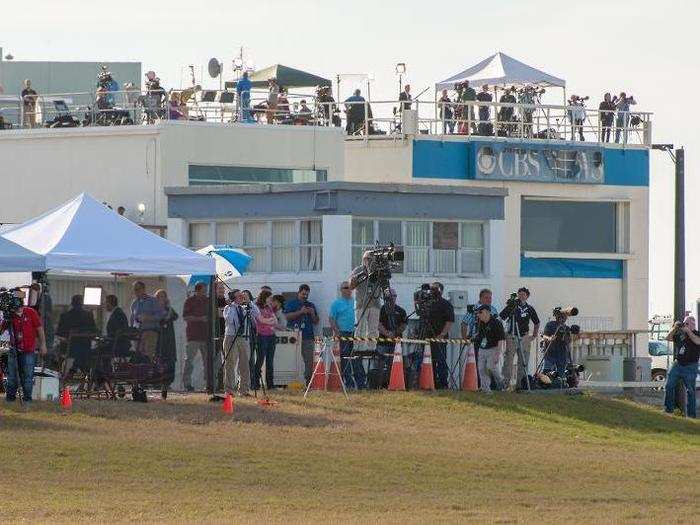
I holed up at a desk in the press site to write and keep an eye out for any delays. So far, the situation looked good — the clock was counting down to launch.

Things got dicey with about two hours left in the countdown: Weather forecasters detected strong wind shear — a type of high-altitude wind that can blow a rocket off-course and lead to failure.
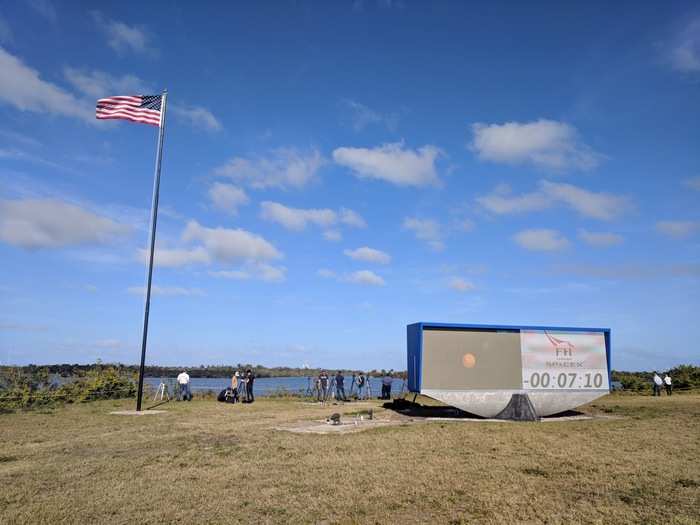
SpaceX had until 4 p.m. ET to launch its rocket, yet delay after delay kept piling on. Everyone was expecting a scrub — but the high-altitude winds finally calmed, the clock began counting down again, and SpaceX gunned for a launch at 3:45 p.m. ET.
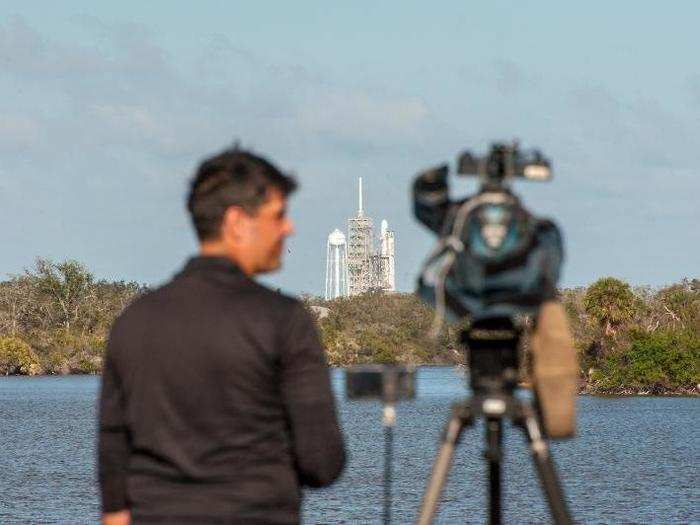
As go-time approached, press filled the site's bleachers, which offered a good view of the launchpad located about three miles away.
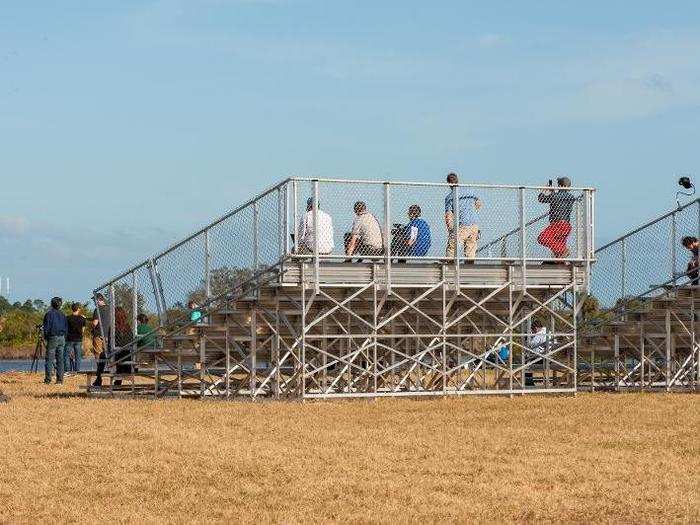
As the clock struck zero, cheering and shouting erupted on the lawn and rocket exhaust burst from the launchpad's flame trench. Falcon Heavy's 27 rocket engines had ignited!
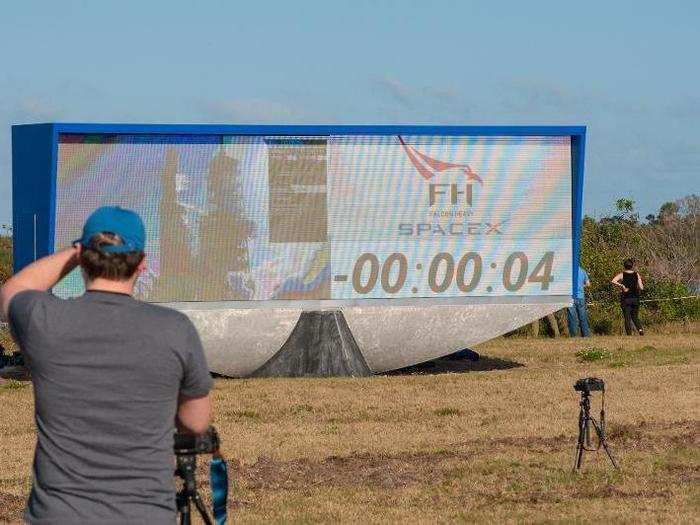
The rocket climbed upward, shooting out the brightest flame I'd ever seen. It looked almost as if a miniature sun was chasing Falcon Heavy into the sky.

The roar of the rocket's 27 engines was so thunderous and percussive, you could feel the sounds rattle deep in your chest.
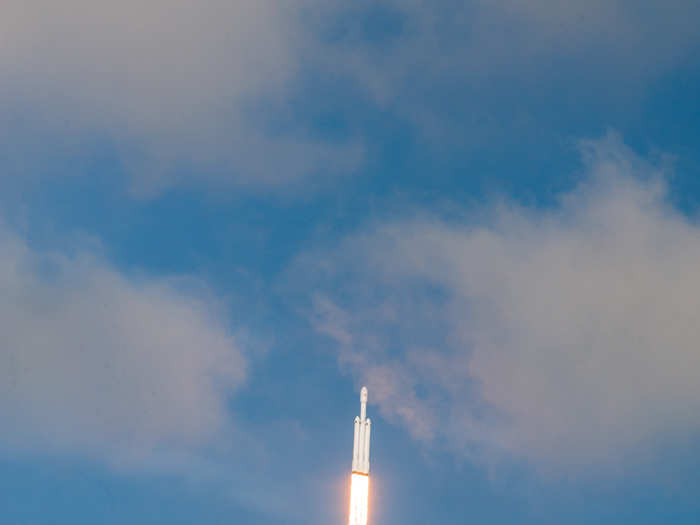
Listen to the sound of Falcon Heavy's launch below (turn up the volume on a good set of speakers or headphones)
The rocket soared higher...
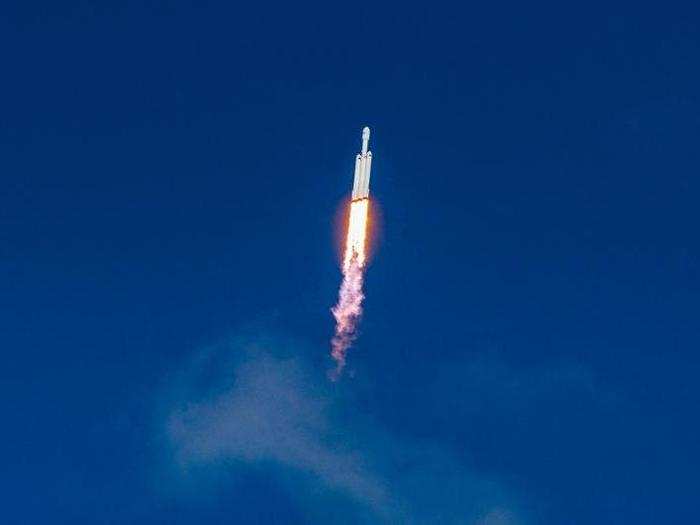
... And higher ...
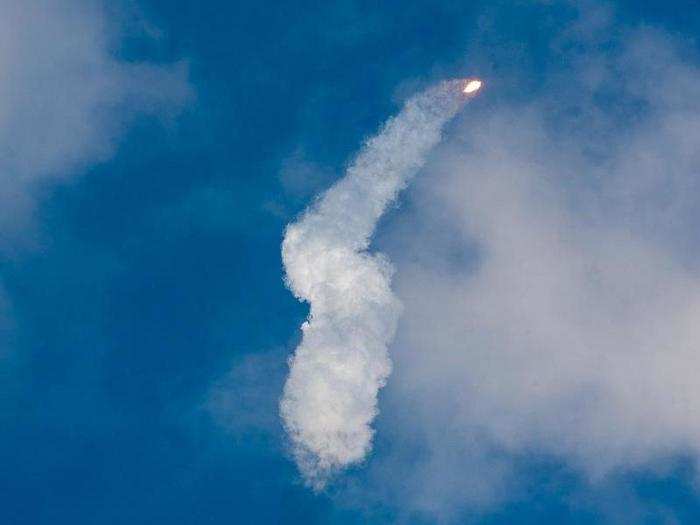
... Until the only visible evidence of the rocket's launch were two giant puffs of smoke.
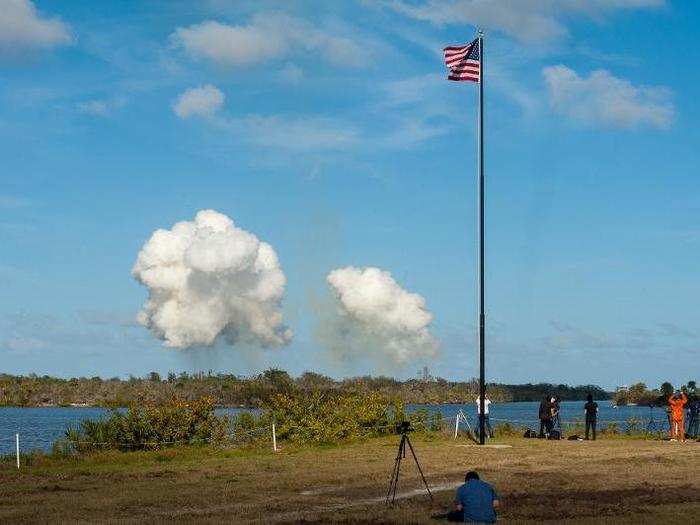
This clip shows Falcon Heavy's launch sped up 400%. It was incredible, but I knew the show wasn't over.

A couple minutes into Falcon Heavy's flight, the rocket's two reusable side boosters popped off and careened back to Earth at supersonic speeds.
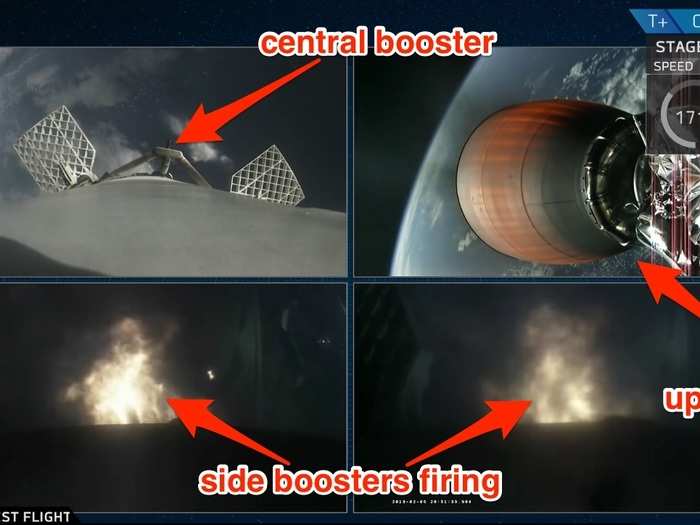
I didn't see the side boosters until about six and a half minutes after launch. That's when they fired up their engines to maneuver to a landing about nine miles from where I was standing.
Each side booster is about 16 stories tall, so my jaw dropped when I saw them rocketing toward the ground. But what completely stunned me were two sets of triple sonic booms they caused — I shouted in surprise when the shockwave reached the press site.
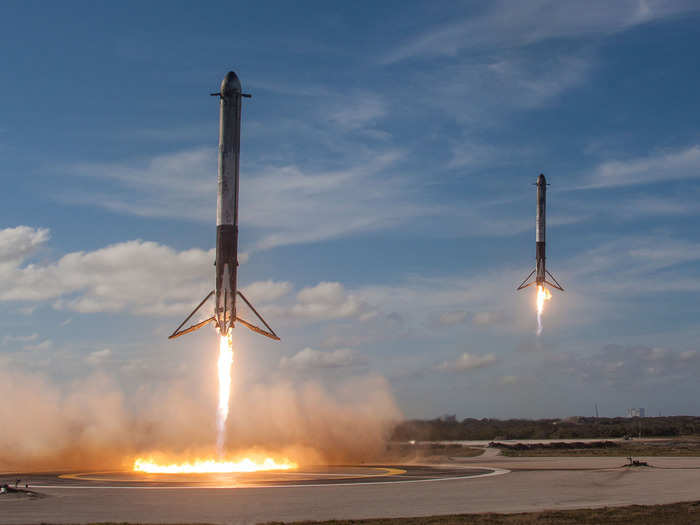
Listen to the sound of Falcon Heavy's side boosters coming back to Earth (turn up the volume on a good set of speakers or headphones)
After milling around outside, stupefied by what I'd seen and heard, I returned to the press site building. A SpaceX representative said that a press conference with Elon Musk was soon to come. Then, in a strange move, he had two security guards block access to him for about 20 minutes.
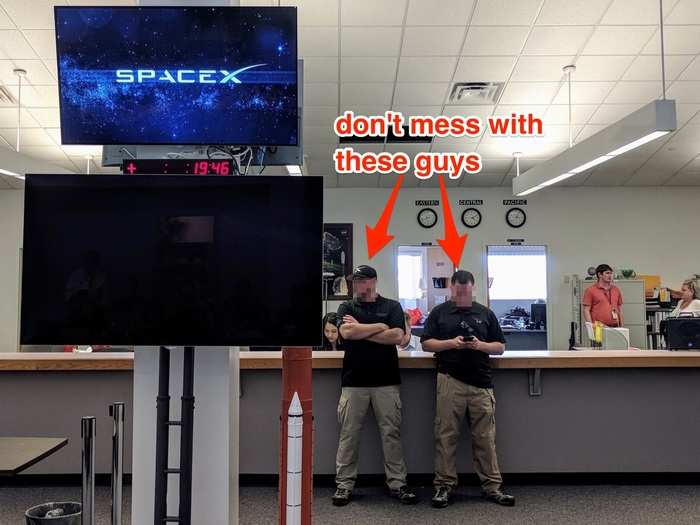
Luckily, my smiley-face sticker allowed me into the press conference room, where Musk was clearly thrilled with the success of Falcon Heavy's first flight.
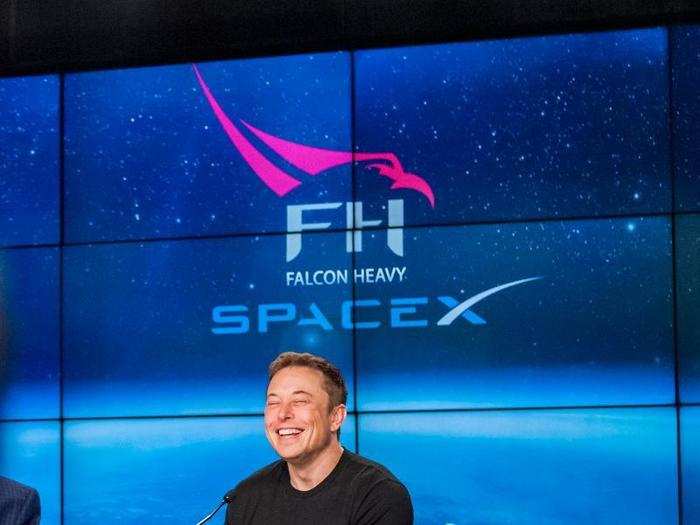
He said the total development of the system, which lasted more than five years, had cost SpaceX more than $500 million.
"We tried to cancel the Falcon Heavy program three times at SpaceX. Because it was like, 'man, this is way harder than we thought,'" Musk said. "Because the initial idea was just, you stick on two first stages as side boosters — how hard can it be? Way hard."
When it comes to SpaceX's future plans, Musk said, the company is working on an even larger reusable launch system called the "Big F***ing Rocket," which is designed to help colonize Mars.
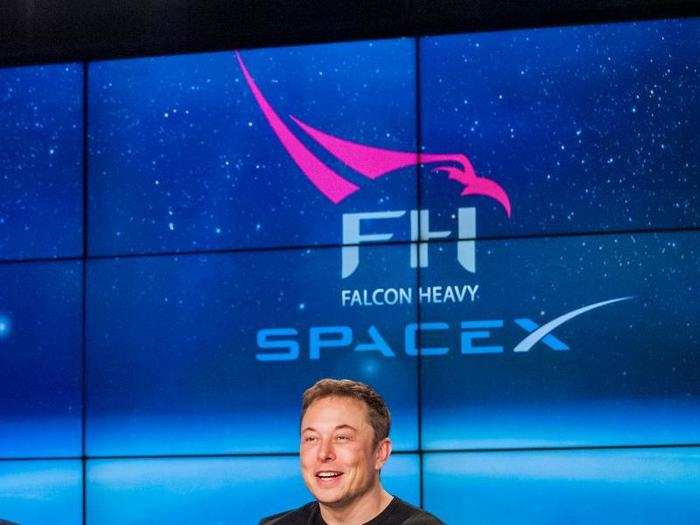
Current plans call for 158-foot-tall reusable spaceship set on top of a super-size reusable booster. Together, the system may stand nearly 350 feet high (130 feet taller than Falcon Heavy, and 45 feet taller than the Statue of Liberty).
"I think we understand reusable boosters. Reusable spaceships that can land propulsively? That's harder. We’re starting with the hard part first," Musk said. "I think it's conceivable that we do our first test flight in three or four years — a full-up orbital test flight including the booster."
By many measures, Falcon Heavy was a standard rocket launch. But in other important ways, it was much more. It sent up a wild payload — Musk's own Tesla Roadster with a spacesuit-wearing dummy — but also also showed that a major disruption is coming to the launch industry.
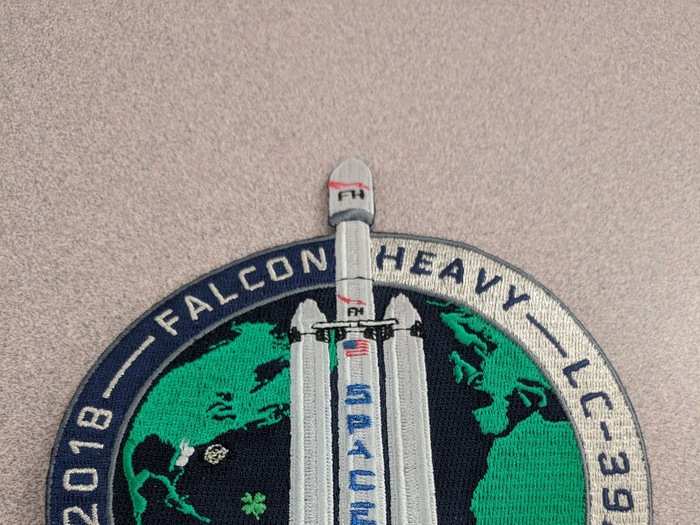
Each Falcon Heavy launch is projected to cost about $90 million — less than one-third the price of similarly capable rockets, which are projected to balloon in cost toward $1 billion per launch.
As I left Kennedy Space Center, it dawned on me that I'd just seen spaceflight history being made. But only time will tell just how momentous the launch will be. The true test is for SpaceX to launch more Falcon Heavies — often, consistently, and safely.
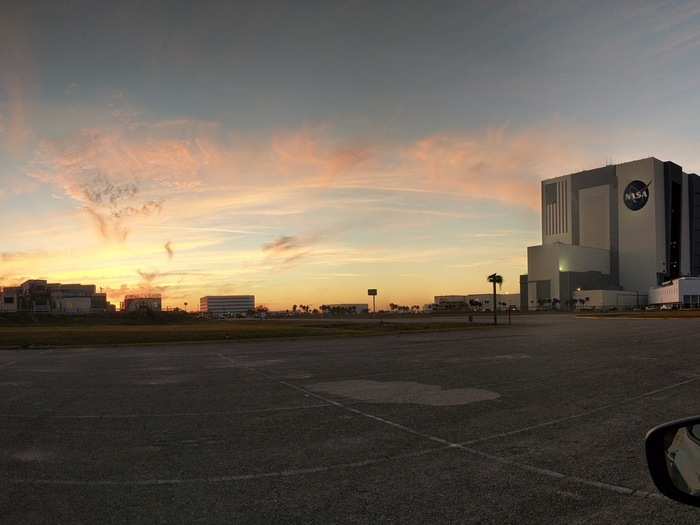
Popular Right Now
Popular Keywords
- India’s wearables market decline
- Vivo V40 Pro vs OnePlus 12R
- Nothing Phone (2a) Plus vs OnePlus Nord 4
- Upcoming smartphones launching in August
- Nothing Phone (2a) review
- Current Location in Google
- Hide Whatsapp Messages
- Phone is hacked or not
- Whatsapp Deleted Messages
- Download photos from Whatsapp
- Instagram Messages
- How to lock facebook profile
- Android 14
- Unfollowed on Instagram
Advertisement